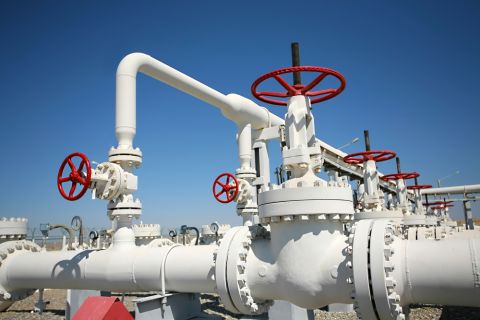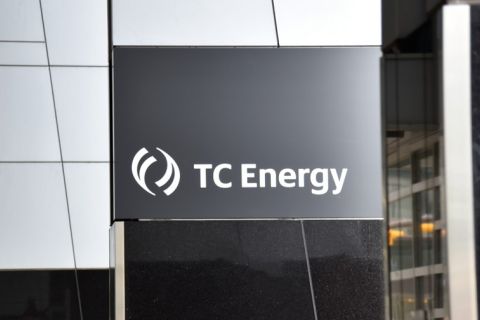A U.S. economy weakened further by the events of September 11, a domestic natural gas inventory overhang, and OPEC's recent Russian roulette with production cuts have all served to dampen commodity prices and energy-sector stock performance. But those are just blips on the investment radar screen of John S. Segner, a senior vice president for <$iInvesco Funds Group >. From his Mile High City office, which commands a sweeping view of the Front Range, he controls some $30 billion of equity investments across all industries. Founded in 1932, Invesco is a member of London-based Amvescap, one of the largest publicly traded money-management firms in the world, with assets of more than $400 billion. "We're going to have periods of low commodity prices and investor uncertainty about the energy sector," says Segner, portfolio manager of the $400-million-plus Invesco Energy Fund and overseer of another $200 million of global energy equity funds. "But unless we build major excess oil and gas capacity throughout the world, we're going to have higher energy prices during the long term. Retail investors, who make up about 90% of our client base, are now beginning to realize that. And they want to be more diversified and more invested in this sector-on a much steadier basis, rather than whipping in and out of it like they have in the past." Bryan, Texas-born Segner, who holds an undergraduate degree in civil engineering from the University of Alabama and an MBA from the University of Texas at Austin, knows a lot about the macroeconomics of the oil and gas industry. As a design engineer in Texaco's petrochemical business and as a financial analyst within Amerada Hess' E&P operations, he gained exposure to both the upstream and downstream sides of the oil patch. In addition, he has served as a managing director and principal for The Mitchell Group, a Houston money-management firm that invests exclusively in energy equities for large institutional clients. (See "Special Delivery," Oil and Gas Investor, July 2001.) The oil and gas industry is very different today than it was 15 years ago, Segner stresses. Then, there was a lot of excess capacity to meet the global demand for oil and gas. Today, in the case of crude oil, there's only about 4- to 5 million barrels per day of surplus productive capacity worldwide. "And in the case of U.S. natural gas, while there was a lot of storage going into this winter-due to weak demand created by a weak economy-that's going to be worked off by second-half 2002, as we come out of this recession and the demand for energy starts growing again." Another energy issue that investors often overlook, but one that continues to fuel a worldwide supply crunch, is higher production-decline rates. Because of improved technology, the industry is now able to produce reserves faster, cheaper and more efficiently. That, in turn, has triggered a dramatic increase in depletion rates. "Take the case of natural gas," says Segner. "About 15 years ago, we were annually depleting 9.5% of the domestic reserves in place in North America; now, we're depleting up to 14.5% of those reserves every year. That means the industry has to run harder just to stay in place, in terms of replacing production. It's on a treadmill and doesn't have the luxury of slowing down spending. But in a weak economic period like the one we've been in recently, that's exactly what has happened." The consequence? "Without excess capacity being built or arresting sharp production-decline rates, we're going to hit a [supply-demand imbalance] wall fairly quickly again. Put simply, low commodity prices are going to be short-lived. That's why we're so positive on the longer-term outlook for the industry." The ideal stocks for the Invesco Energy Fund are those with defensive characteristics, says Segner. In the E&P sector, that means owning the equities of producers that are growing their production, doing it at a low cost, and generating good annual rates of return-15%-plus after taxes-that will help mitigate any declines in commodity prices. "If you have flat or declining production, or if you're growing production at a poor rate of return, you're not going to get into my fund. I'm not buying a liquidating or annuity-type of investment." E&P holdings While invested in all components of the energy industry at any given time, Segner backed away last May from an aggressive stance in oil-service stocks and increased the fund's equity weighting to international oils while maintaining select upstream positions. A glance at the fund's recent top-10 holdings reflects just that-and much more about Segner's mindset. "Our top holding is <$iMurphy Oil >," he says. "Between now and 2004, we expect current annual production to increase more than 50%, primarily from development programs in the Gulf of Mexico, onshore Canada and offshore Canada's east coast. This is going to significantly increase earnings. Already the stock has moved up-from $50 to $60 at the start of 2001 to $72 per share near year-end." Segner says the company also has a strong ongoing exploration program that could further add to value. He cites the giant Ladyfern gas prospect in northeast British Columbia, where Murphy is the operator. He is also high on Gulf Indonesia Resources Ltd., which is 72% owned by <$iConocoPhillips. > The story here is not only one of production growth from an Asian area considered core by the newly merged parent, but also one of valuation, he says. "Trading recently at only $8 per share, this stock is extremely inexpensive on an asset value basis. Also, there's the possibility that at some point <$iGulf Indonesia > may be brought back in by ConocoPhillips." Another top holding is <$iKinder Morgan >, the midstream gas master limited partnership (MLP). "We're in a yield-driven market, but up until recently, we couldn't own a growth-oriented MLP like Kinder Morgan without tax consequences to our shareholders," explains Segner. The new "I" shares that <$iGoldman Sachs > came up with last May for Kinder Morgan, however, now allow Invesco to own a stock position in an MLP without tax consequences-and the shares provide the same yield as the MLP unit's cash distributions. According to Goldman Sachs, the "I" share represents a common stock interest in a corporation. Essentially, the new security mimics the underlying economics of an MLP unit, except that instead of paying a cash distribution, it provides a distribution in the form of additional shares of common stock-something institutions can own without tax problems. Before its announced merger with Conoco, Phillips was already a major Invesco Energy Fund holding. "By itself, we thought <$iPhillips > was a company that was cheaply priced, but doing a lot of things right," says the buysider. "Now, the proposed new ConocoPhillips company creates an even better valuation and production-growth story-and the pairing would be accretive to earnings for both sets of shareholders." While not a great market performer in 2001, <$iEl Paso Energy >, another major Invesco holding, is growing its earnings 20% per year-a much faster rate than what its price-to-earnings (P/E) multiple might suggest, says Segner. "What has hurt this gas-pipeline and energy conglomerate is bad public relations arising from its litigation problems in California and from general investor concern about any exposure that pipeline and trading companies might have to the unfortunate Enron situation." Over time, El Paso's stock will be a winner, he says. The same outlook applies to <$iThe Williams Cos. >, another wellhead-to-burner-tip energy conglomerate. The Invesco Energy Fund, which once held shares of <$iEnron Corp. >, got out of that ill-fated stock early in 2001, at $68 per share. Among the fund's international, integrated oil holdings, ExxonMobil ranks at the top. "It's the best-managed company of any in the oil and gas industry," says Segner. "The company reinvests its capital so well and in such a disciplined fashion that it's providing good long-term returns and increased dividends to shareholders. Also, it's using a lot of free cash flow to repurchase its shares on a fairly consistent basis." Another integrated holding, <$iChevronTexaco >, also comes in for plaudits from the fund manager. "Because of its greater size, scale and cost synergies, the new company can now compete on a project basis against the likes of ExxonMobil. Also, since the stock is trading at a more discounted P/E multiple to ExxonMobil than it should, its valuation is attractive." The rationale behind the fund's Kerr-McGee holding is similar to that assigned to its stake in Murphy Oil. "We've been a fan of the overall production growth of the company, even before its recent acquisition of HS Resources." Production growth is again the big motive for the fund's stake in <$iPioneer Natural Resources. > "We expect this producer to grow output 13% to 15% in 2002, and by another 30% in 2003-just from the development of mainly gas reserves that have already been found, primarily in the Gulf of Mexico," says Segner. "This company, which also has a very good onshore North American gas asset base, has really managed to turn things around." Is there much fund exposure to smaller-cap E&P names? "We run the portfolio with 30 to 40 names at any one time, so a small-cap producer can get in," he says. "But I've got to own a lot of it; otherwise, the holding wouldn't have that much impact on the fund, even if the stock doubles or triples. Combine this hurdle with the criteria we use in screening upstream investments, and it becomes clear that we don't own a lot of small-cap names." Nevertheless, the fund runner is sanguine about the prospects for many of the smaller-cap Rocky Mountain producers. "The Rocky Mountain area is where we're going to end up finding much of the gas we need, and producers there are going to do extremely well-more so than operators in other parts of the country-simply because the region is less mature and there are more untapped geologic and drilling opportunities." In the Canadian upstream sector, the fund owns <$iNexen Inc. >, the former CanOxy. "The company has a very compelling valuation, is well managed and is growing production," he says. "Beyond that, however, our equity exposure to the Canadian oil and gas industry is somewhat limited. Going forward, we see more consolidation occurring as U.S. energy companies continue to buy out more companies within that sector." As for oil-service stocks, which are notably missing from the fund's top-10 energy holdings, they represent nearly 20% of the portfolio. Included are the bigger, more defensive names in the sector like <$iSchlumberger >, N <$iabors Industries > and <$iGlobalSantaFe >. Among these holdings, the new GlobalSantaFe-the amalgam of Global Marine and Santa Fe Drilling-is very attractive, he says. "The stock has been beaten down, so it has plenty of room to move up from its recent excessively low trading levels. What I also like about the stock is it offers institutions another choice if they want to buy into the big-cap offshore drilling group. They're not just limited to <$iTransocean Sedco Forex > or <$iNoble Drilling >." The Invesco Energy Fund, which from October 1996 to October 2001 was ranked No. 1 among 33 natural-resource funds by the mutual fund rating agency Lipper Group, expects to be more invested in oil and gas equities in 2002. "With little excess oil and gas productive capacity on the horizon, we're very positive on the energy sector over the next five years," says Segner. "Also, as the economy and commodity prices improve through 2002, more investors are going to be attracted to this industry. And with more retail investors turning to financial advisers-the principal source of investment dollars for Invesco-that should further increase money flows into our sector fund, as well as into Invesco's general funds, which also have energy equities exposure." The portfolio manager explains that in order to accommodate the growing number of financial planners or brokers that require front- or back-end fees-which can amount to as much as 5% of an investment-Invesco, beginning March 1, 2002, will end its "no-load" fee structure for retail investors. However, Segner quickly points out, an investor who's already in any of the 34 Invesco general and sector funds-prior to March 1, 2002-will never have to pay any load, whether he or she is switching between funds or adding money to an existing one.
Recommended Reading
Ozark Gas Transmission’s Pipeline Supply Access Project in Service
2024-04-18 - Black Bear Transmission’s subsidiary Ozark Gas Transmission placed its supply access project in service on April 8, providing increased gas supply reliability for Ozark shippers.
Kinder Morgan Sees Need for Another Permian NatGas Pipeline
2024-04-18 - Negative prices, tight capacity and upcoming demand are driving natural gas leaders at Kinder Morgan to think about more takeaway capacity.
TC Energy's Keystone Oil Pipeline Offline Due to Operational Issues, Sources Say
2024-03-07 - TC Energy's Keystone oil pipeline is offline due to operational issues, cutting off a major conduit of Canadian oil to the U.S.
Tallgrass Energy Announces Latest Open Season for Pony Express Pipeline
2024-03-12 - Prospective shippers can review details of the open season, which began March 11, after signing a confidentiality agreement with Tallgrass.
TC Energy’s Keystone Back Online After Temporary Service Halt
2024-03-10 - As Canada’s pipeline network runs full, producers are anxious for the Trans Mountain Expansion to come online.




